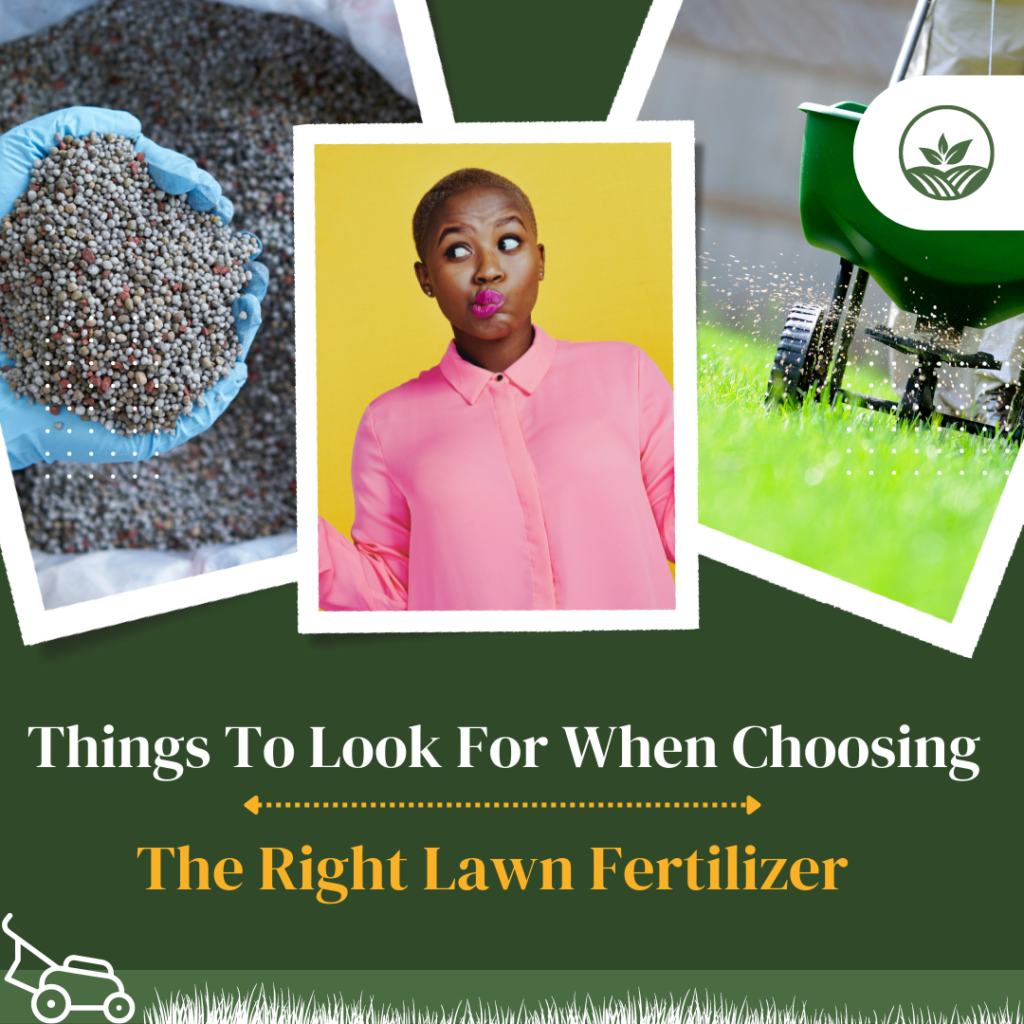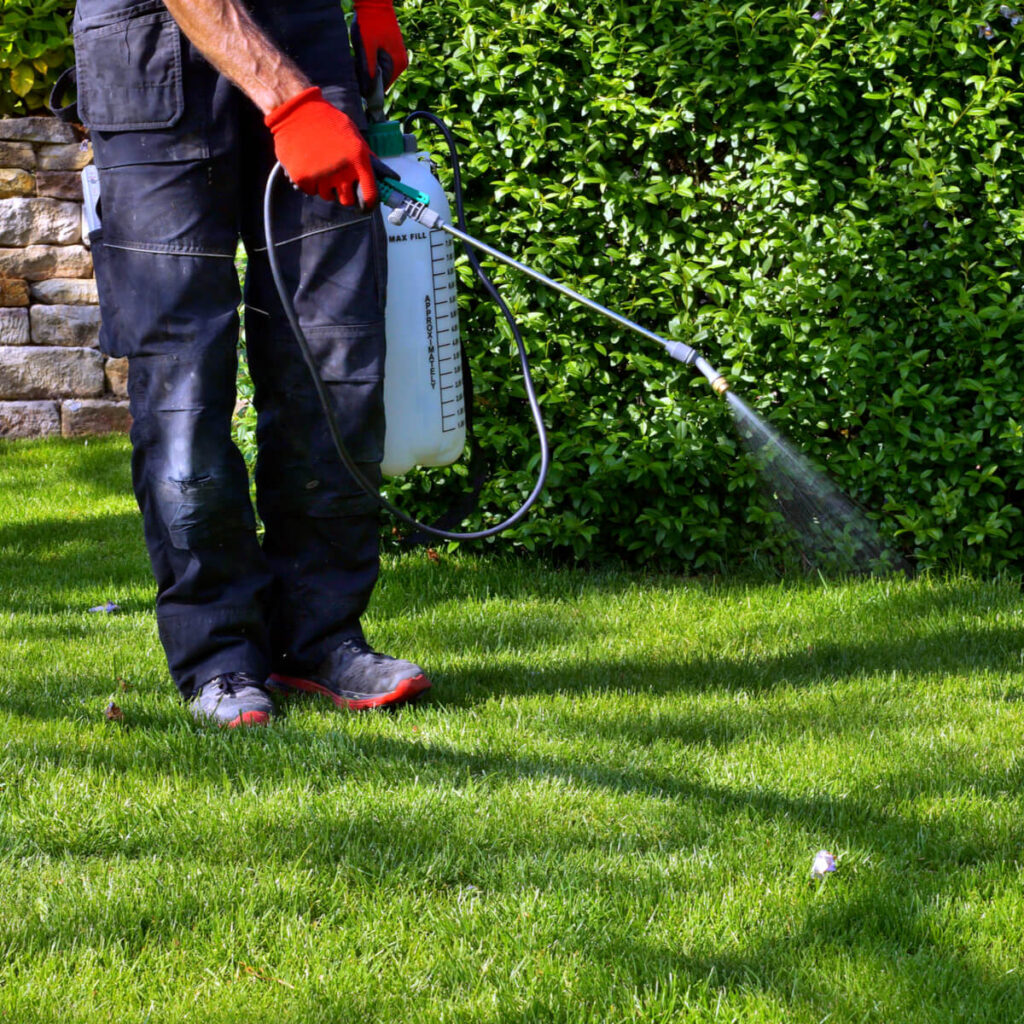There are many different types of lawn fertilizers on the market today, and it can be hard to know which one is right for your lawn. To help you make the best decision, you need to understand what each type of fertilizer contains and how it benefits your lawn. This article will help you do just that.

What is Fertilizer and What Does it do for your Lawn
Lawn fertilizer is a substance that is added to soil in order to improve the quality of plants that grow in that soil. There are many different types of fertilizer on the market, but they all contain three primary nutrients: nitrogen, phosphorus, and potassium.
Each of these nutrients plays an important role in plant growth. Nitrogen helps plants to produce green leaves and stems, phosphorus helps to create strong roots, and potassium helps to build sturdy plants.
Lawn fertilizer also contains secondary nutrients, which are essential for plant growth but are not used as often as the primary nutrients. These include calcium, magnesium, and sulfur.
When you are choosing a fertilizer for your lawn, you need to consider the type of grass you have and the type of soil you have. Different fertilizers are better suited for different types of grass and soil. You also need to consider the age of your lawn. New lawns need more nitrogen than older lawns do.
The Three Main Types of Lawn Fertilizer – Organic, Synthetic, and Slow-Release

There are three main types of lawn fertilizers on the market today: organic, synthetic, and slow-release.
Organic fertilizers are made from natural ingredients, such as manure, compost, or plant residue. These fertilizers are slow to release nutrients, which means they provide a steady stream of nutrients to your lawn over an extended period of time.
Synthetic fertilizers are made from chemicals, and they are fast-acting. This means that they provide a large burst of nutrients to your lawn all at once. However, this also means that the effects of synthetic fertilizers wear off quickly.
Slow-release fertilizers are a blend of organic and synthetic materials. They provide a slow and steady release of nutrients to your lawn, which helps to maintain healthy plants over time.
Organic fertilizers are better for the environment because they release their nutrients slowly over time, whereas inorganic fertilizers release their nutrients all at once. Inorganic fertilizers can also be harmful to the environment if they leach into groundwater or if they are accidentally ingested by animals.
How to Choose the right Fertilizer for your Lawn
When you are choosing a fertilizer for your lawn, it is important to consider the type of grass you have, the type of soil you have, and the age of your lawn.
If you have a cool-season grass such as Kentucky bluegrass or fescue, you should use a fertilizer that contains a high level of nitrogen. If you have a warm-season grass such as Bermuda or zoysia, you should use a fertilizer that contains a high level of phosphorus.
If you have clay soil, you should use a lawn fertilizer that contains a high level of potassium. If you have sandy soil, you should use a fertilizer that contains a high level of nitrogen.
New lawns need more nitrogen than older lawns do. A good rule of thumb is to use a fertilizer that contains 10-20-10. This means that the fertilizer contains 10% nitrogen, 20% phosphorus, and 10% potassium.
When choosing a fertilizer, be sure to read the label carefully to make sure that it meets your needs.
Benefits of Using Fertilizer on your Lawn
Fertilizer is an important part of lawn care. Techniques used for lawn fertilization Salt Lake City help to improve the quality of your lawn and they also help to keep it healthy all year round.
Here are some of the benefits of using fertilizer on your lawn:
1. Fertilizer helps to make your lawn green and healthy.
2. Fertilizer helps to strengthen your lawn’s roots.
3. Fertilizer helps to build a thick, healthy lawn.
4. Fertilizer helps to prevent weed growth.
5. Fertilizer helps to protect your lawn from disease.
6. Fertilizer helps to keep your lawn looking good all year long.
How to Apply Fertilizer to your Lawn
When you apply fertilizer to your lawn, you should always follow the directions on the package. Different fertilizers have different application rates, and it is important to follow the instructions carefully.
The best time to fertilize your lawn is in the spring or fall when the grass is growing actively. You should never fertilize your lawn in the summer when the grass is dormant.
There are three main ways to apply fertilizer to your lawn: by hand, with a spreader, or with a rotary hoe.
If you are applying fertilizer by hand, you should spread the fertilizer evenly over the entire surface of the lawn. Be careful not to over-fertilize, as this can damage your lawn. A good rule of thumb is to apply no more than 1 pound of fertilizer per 1,000 square feet of lawn.
If you are using a spreader, you should calibrate the spreader before you start using it. This will ensure that you are applying the correct amount of fertilizer to your lawn. It is important to keep in mind that different types of spreaders will have different application rates.
If you are using a rotary hoe, you should run it over the entire surface of your lawn in overlapping circles. This will help to distribute the fertilizer evenly.
After you have applied the fertilizer, you should water your lawn deeply. This will help the fertilizer to reach the roots of the grass.
Fertilizers to Avoid Using on your Lawn
There are some lawn fertilizers that you should avoid using on your lawn. These fertilizers can be harmful to the environment or to your lawn.
1. Do not use any fertilizer that contains mercury.
2. Do not use any fertilizer that contains lead.
3. Do not use any fertilizer that contains arsenic.
4. Do not use any fertilizer that contains phosphorus unless your soil test indicates that your lawn needs it.
5. Do not use any manure-based fertilizer unless it has been composted.
6. Do not use any fertilizer that contains sewage sludge.
By following these guidelines, you can choose the best fertilizer for your lawn and avoid using any fertilizers that could be harmful to your lawn or to the environment.
Tips for Keeping your Lawn Healthy and Looking Great
- When you fertilize your lawn, be sure to water it deeply afterward. This will help the fertilizer to reach the roots of the grass.
- Another way to keep your lawn healthy is to mow it regularly. Be sure to mow it at the right height, and never mow it too short.
- You should also rake up any leaves or other debris that falls on your lawn. Leaves can smother the grass and cause weed growth.
- If you have any bare spots on your lawn, you can fill them in with some topsoil or seed. Be sure to water the areas well after you have filled them in.
Lawn fertilizer is an important part of keeping your lawn healthy and looking great. By following the guidelines in this article, you can choose the right fertilizer for your lawn and avoid using any fertilizers that could be harmful to your lawn or the environment. Tips for keeping your lawn healthy and looking great are also provided. We hope this guide will serve you well and if you feel you still are in need of some more advice or would just like a helping hand, don’t hesitate to contact your local lawn care professionals.
We Hope you enjoyed this informative blog post. Be sure to come back as we post more home improvement blogs and if you haven’t already, be sure to check out our last blog post on the best home security systems to learn how you can not only improve your home security but also lower your electricty bill with premium security screens for windows and doors.